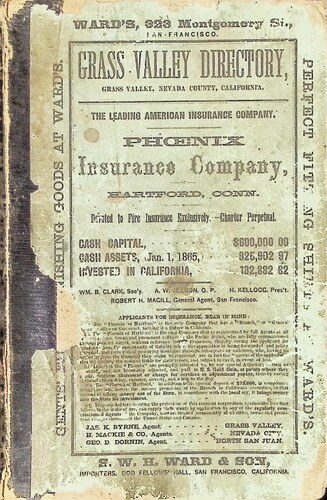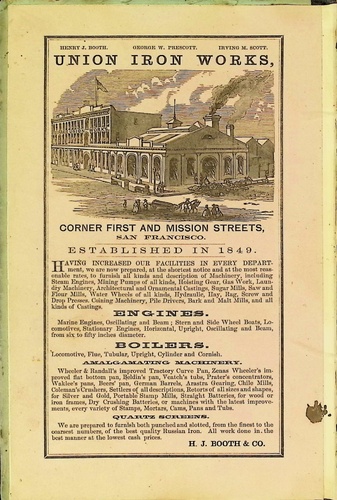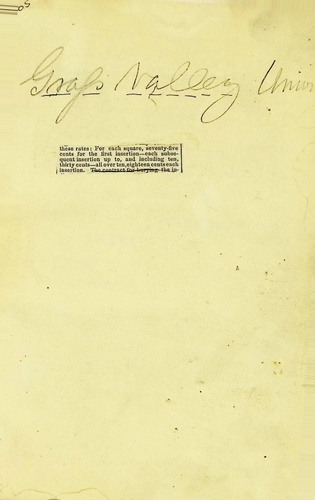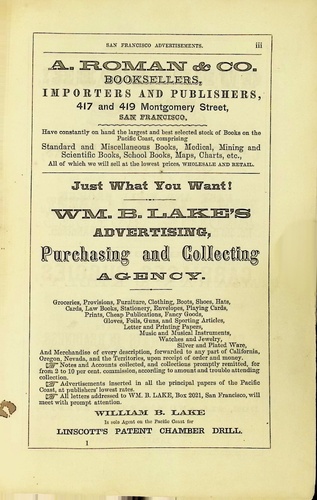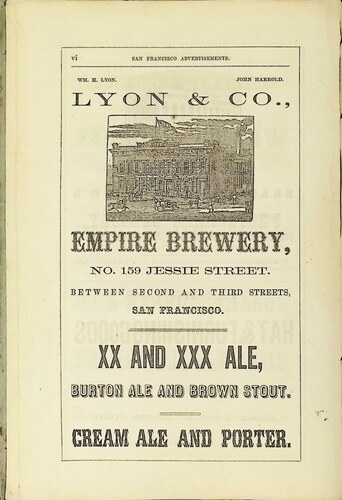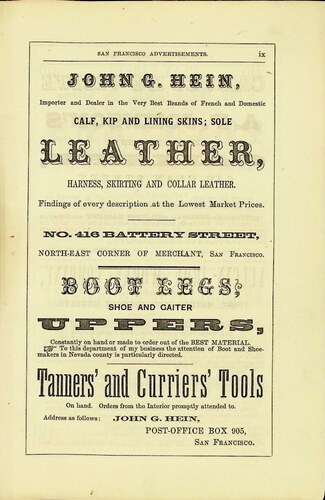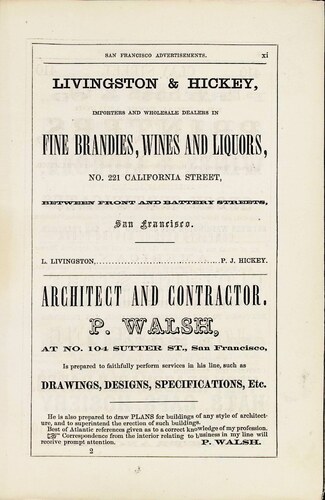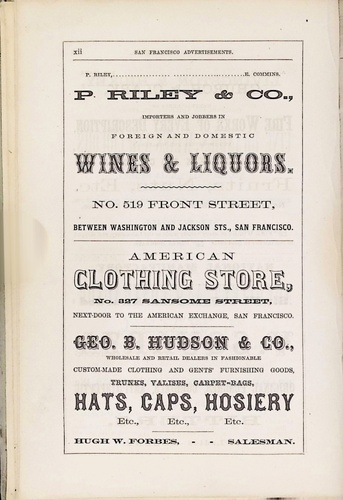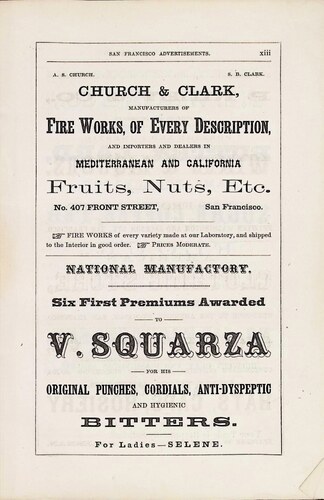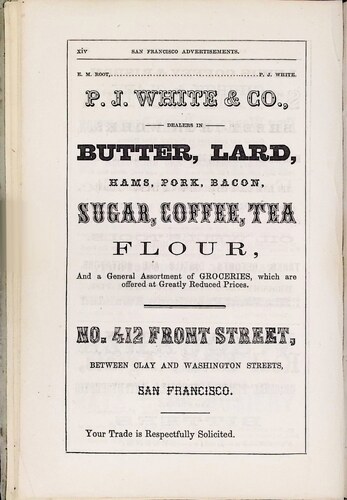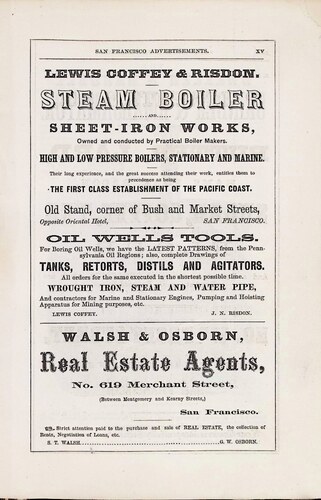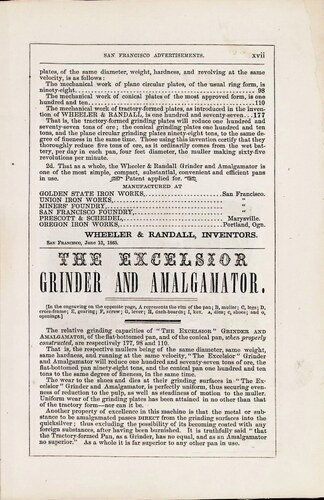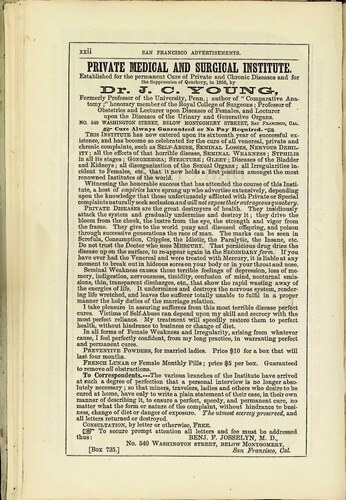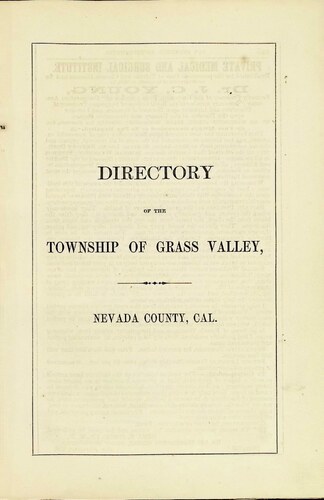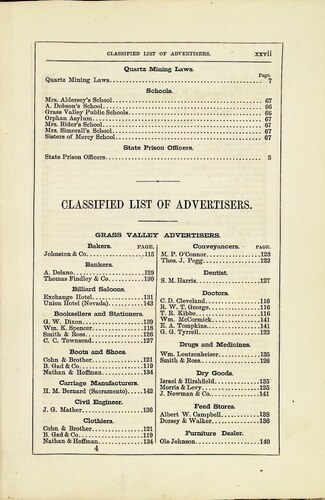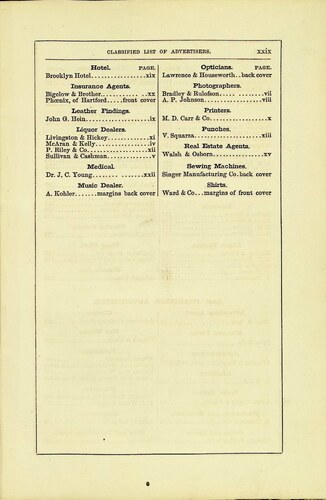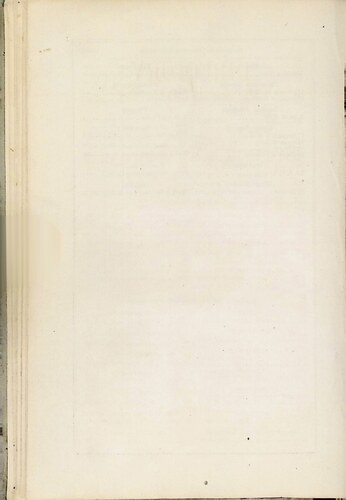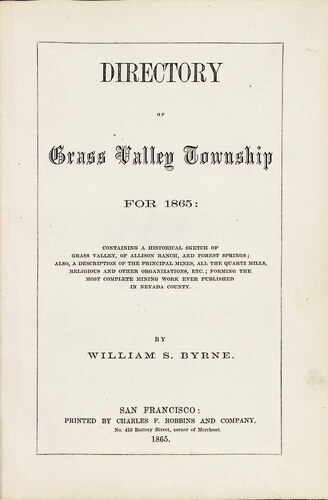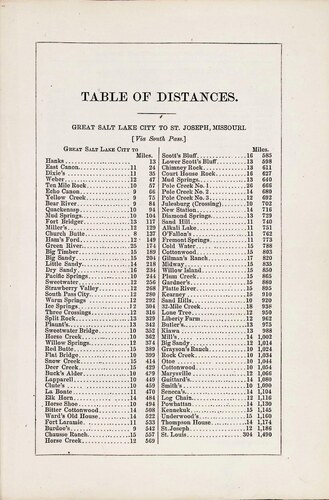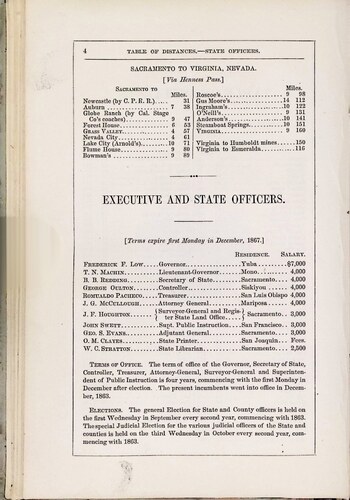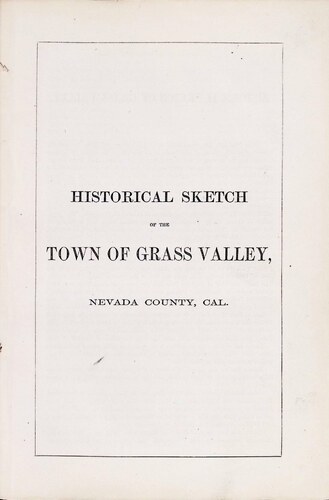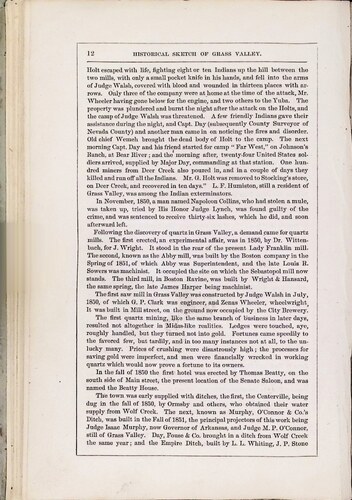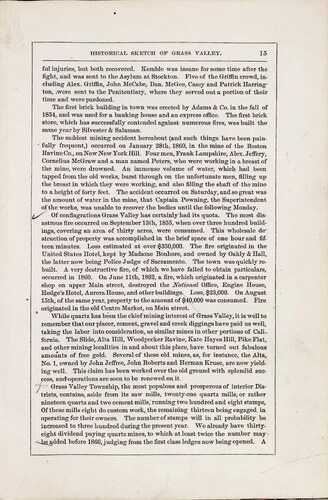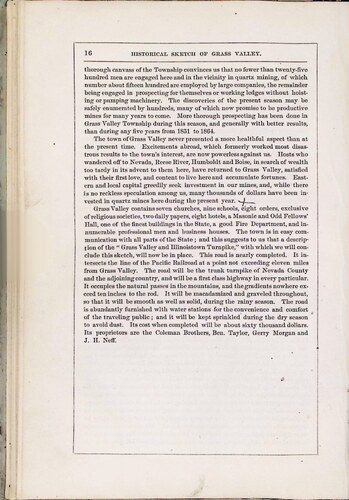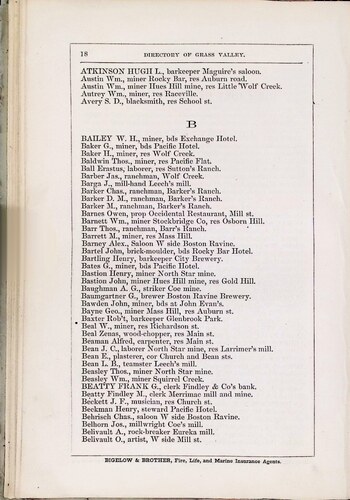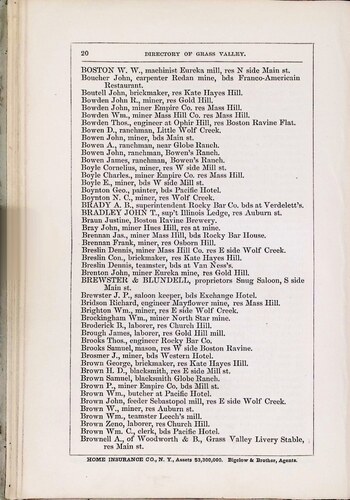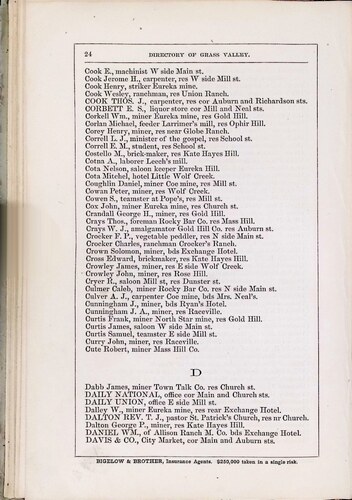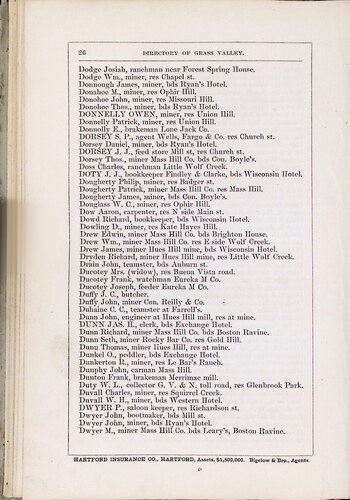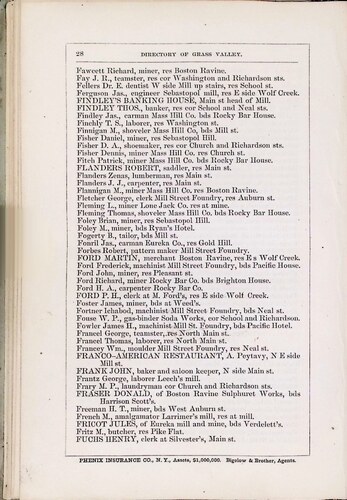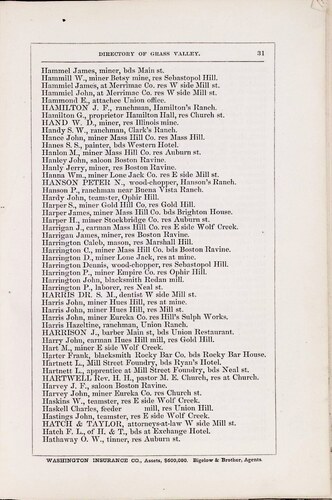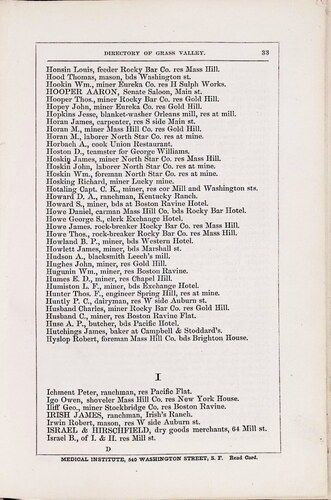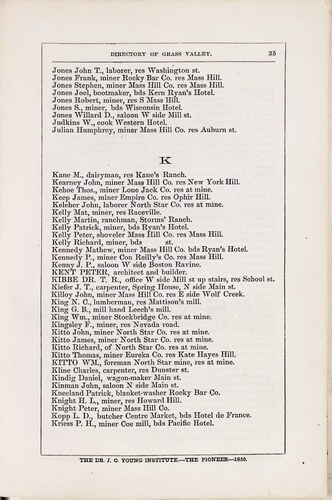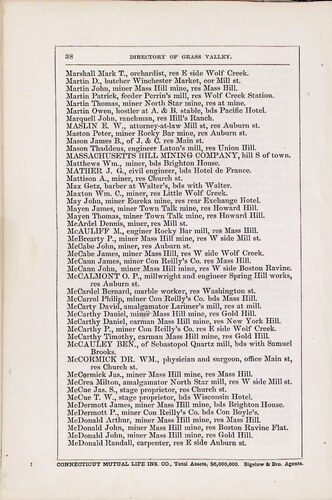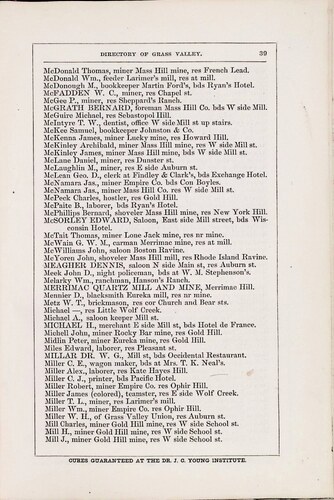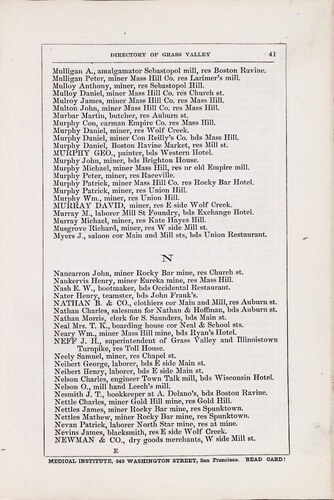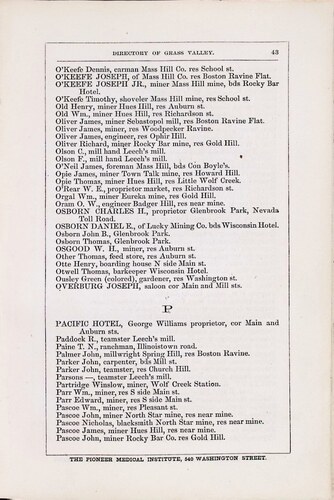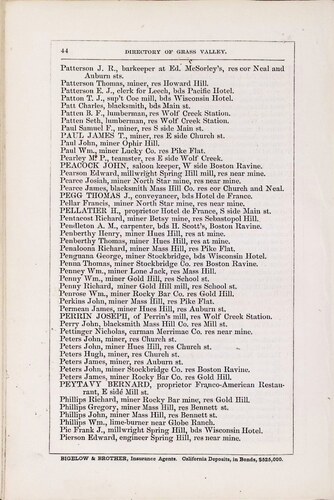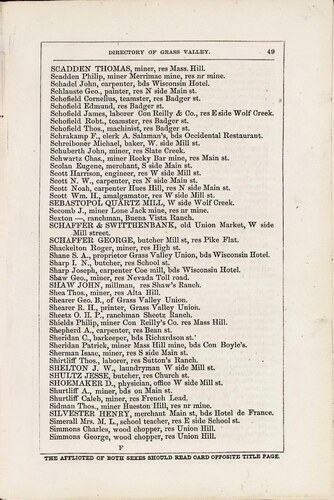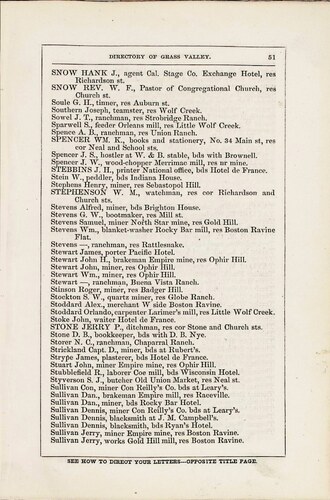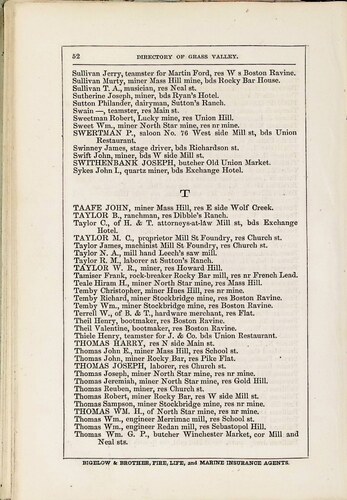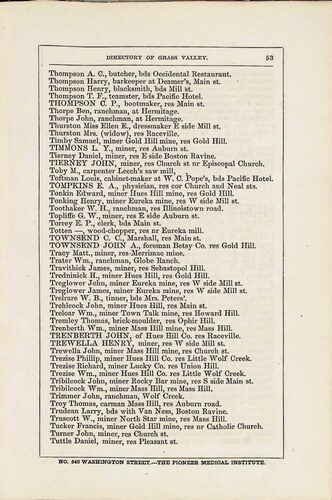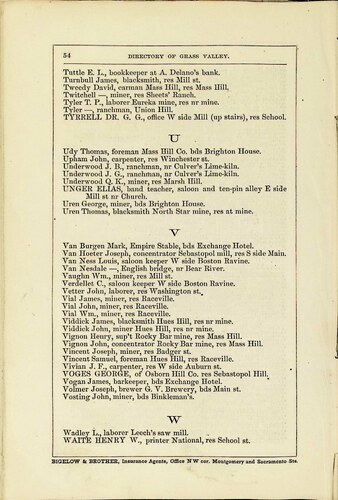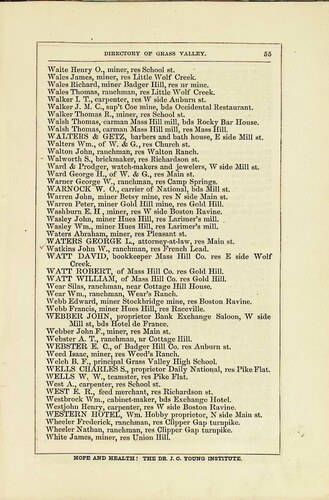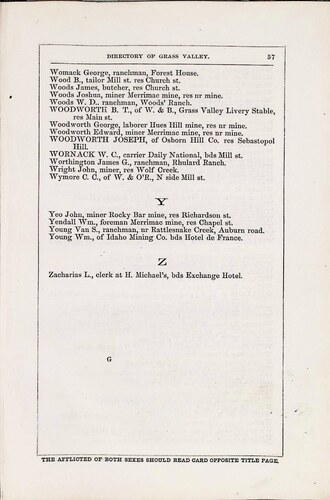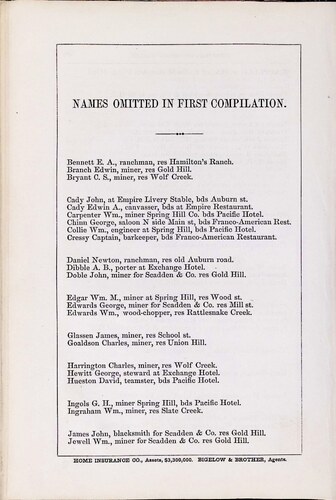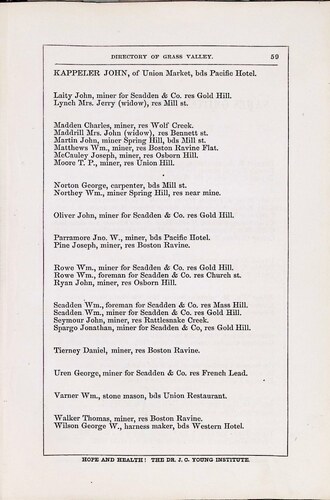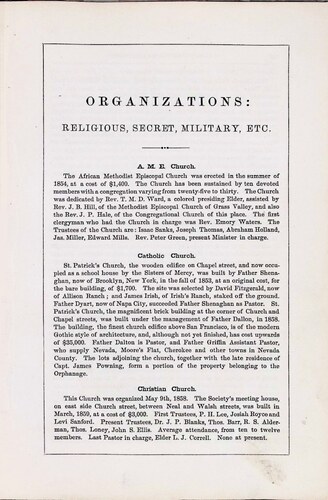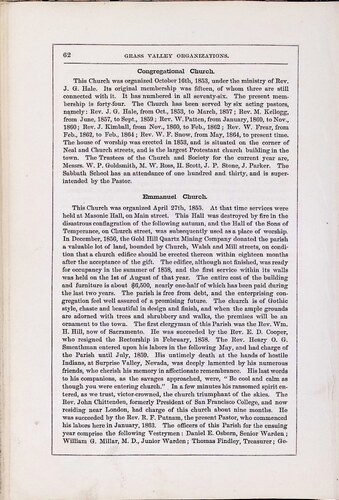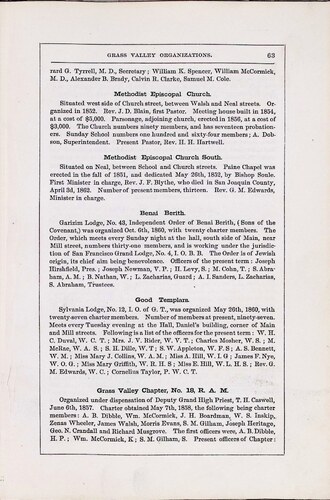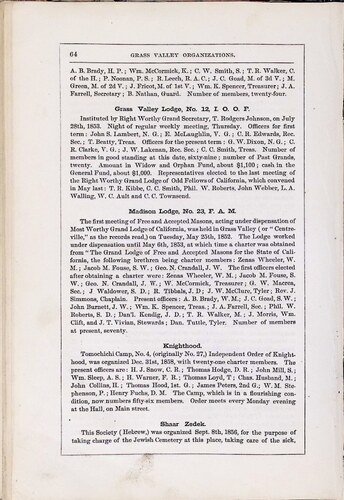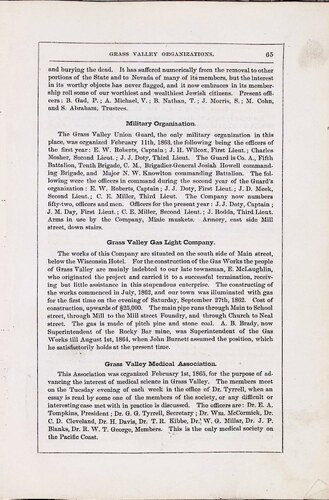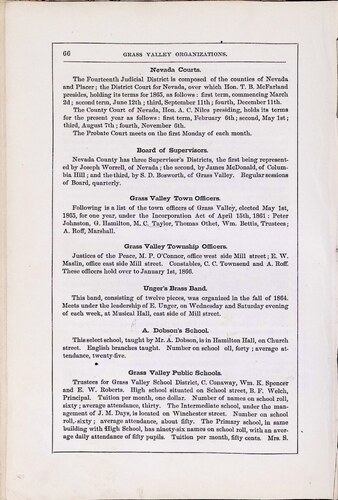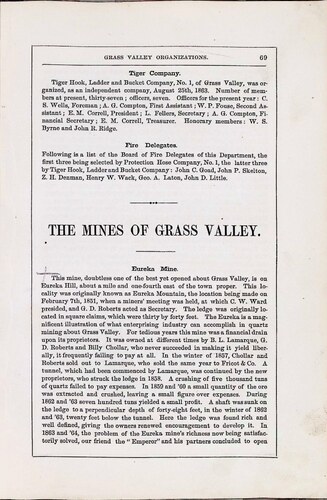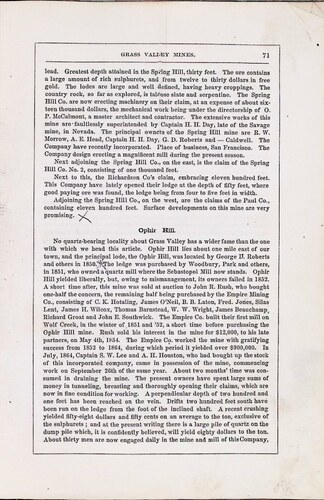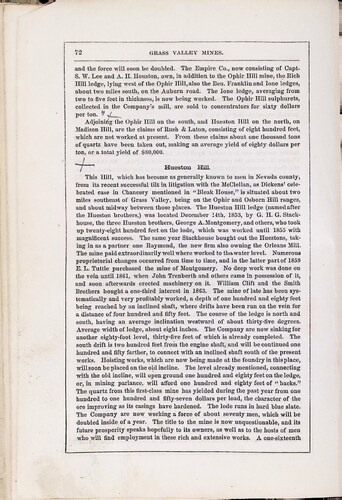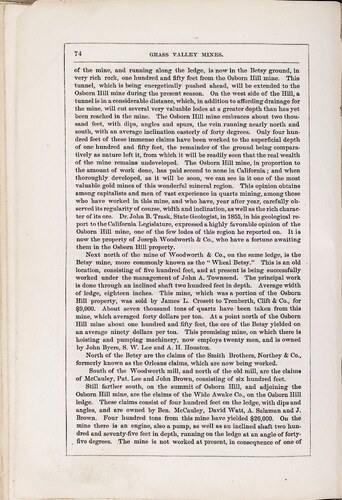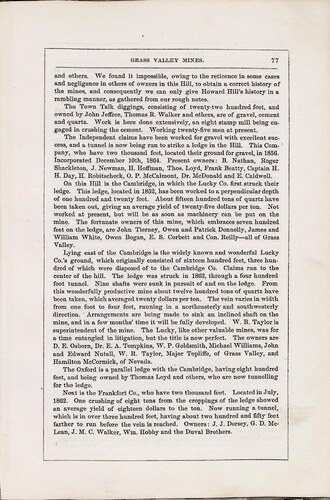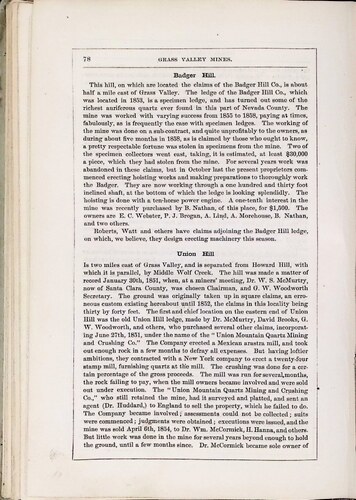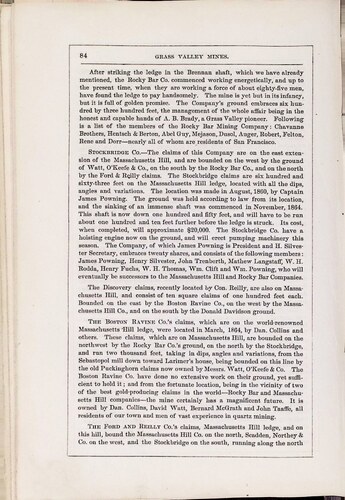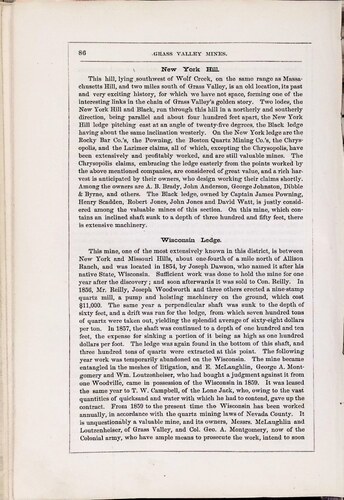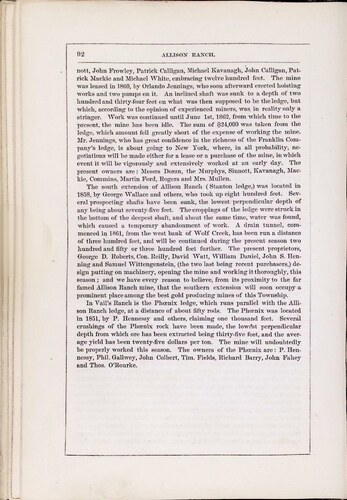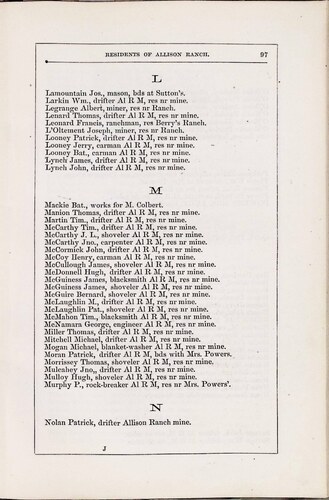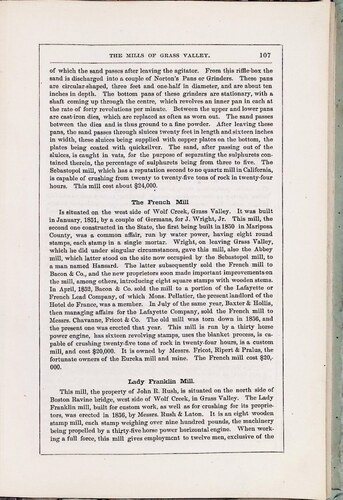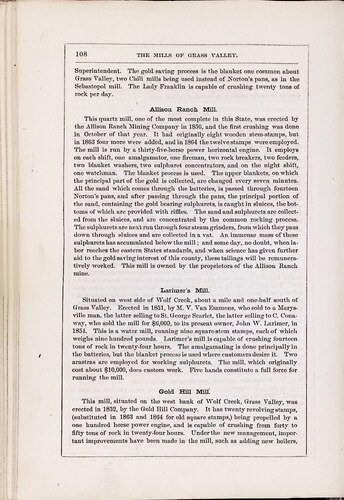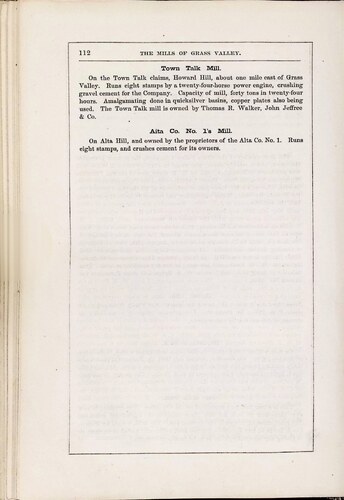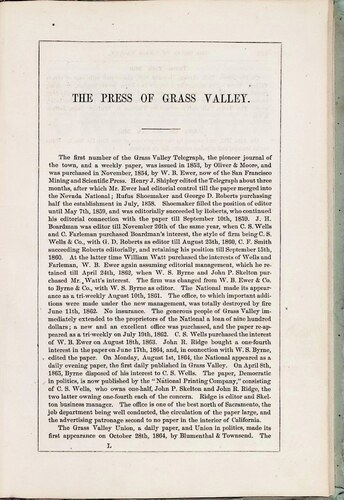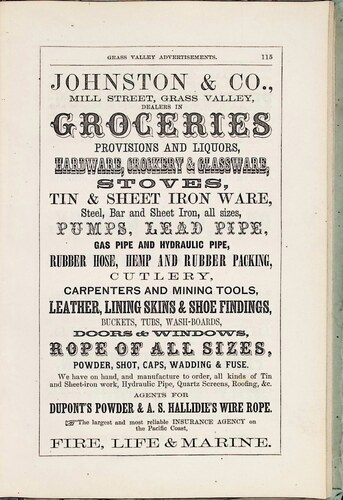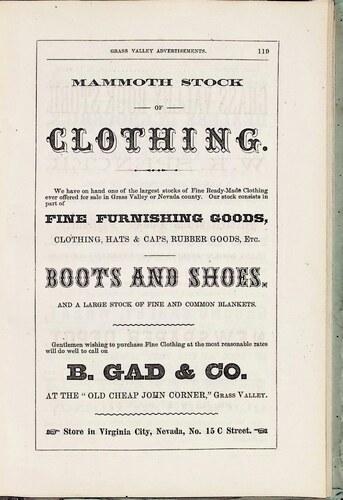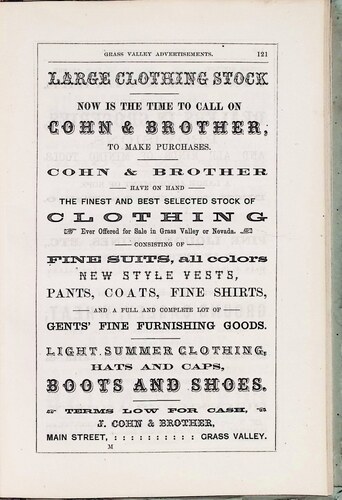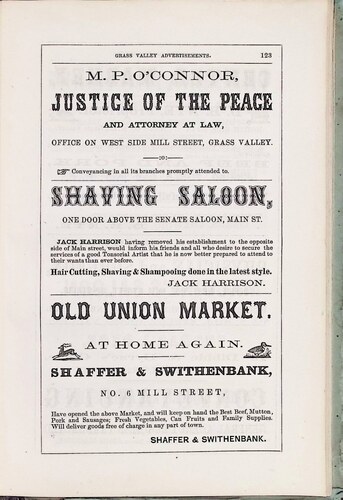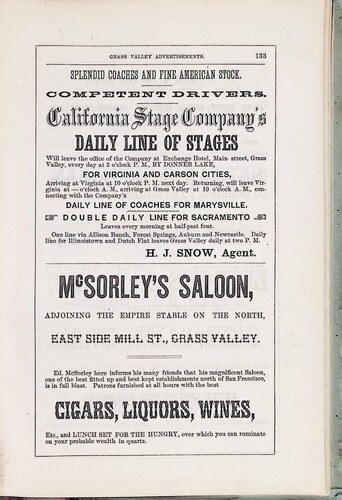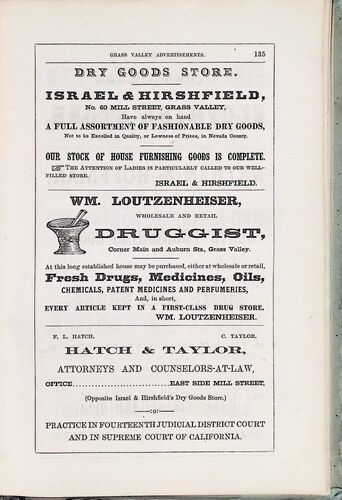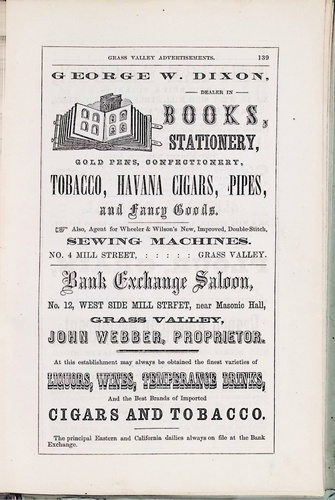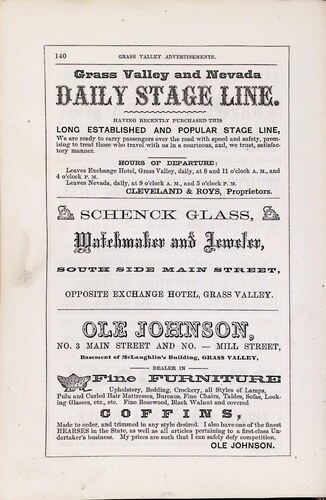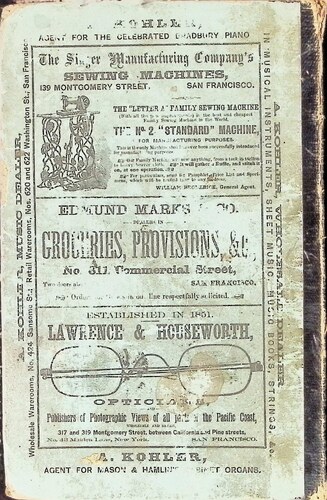Enter a name, company, place or keywords to search across this item. Then click "Search" (or hit Enter).
Collection: Directories and Documents > Directories
Directory of Grass Valley Township for 1865 (650.025.BYR)(1865) (180 pages)
Directory of Grass Valley Township for 1865 is the first directory to be compiled of and by, if not exactly for, the business concerns and residents of Grass Valley. Unlike Hugh B. Thompson's Directory of the City of Nevada and Grass Valley (1861), which continued the favoritism shown in Nevada in Brown & Dallison's Nevada, Grass Valley and Rough and Ready Directory (1856), compiler and editor William S. Byrne declared in full caps, at the start of his 1-page introduction, that Grass Valley was "THE RICHEST GOLD-BEARING QUARTZ REGION ON THE PACIFIC SIDE" (page 6). And he led his "Historical Sketch of Grass Valley" with this sanguineous, larger-than-life location shot (page 10).
GRASS VALLEY, the wealthiest, most prosperous and most extensively known
of interior towns of California, is situated near the centre of Nevada County,
four miles west of the County seat, is thirty-five miles from Marysville,
sixty-five miles from our State Capitol; and upon the completion of the
great trans-continental thoroughfare to a point near Illinoistown*, in Placer
County, which will occur during the present season, our citizens will have
easy communication with the Pacific Central Railroad [sic] in eleven miles'
travel over one of the best turnpike roads* in the Sierra Nevada foothills.
* See notes below.
Byrne's Directory of Grass Valley Township for 1865 came out in July 1865 with the shorter title "Grass Valley Directory" on the cover. In his 1-page introduction, Byrne describes a number of difficulties he faced in compiling the directory, including this reason for many missing names (page 5).
Even in the matter of obtaining names, great difficulties have been
experienced, many persons, either through cupidity or ignorance, actually
refusing to give their names. This, together with the loss of a lengthy list
of residents of the Township, which accident occurred after completing the
general canvass, and which could not be remedied save by great loss of time,
will explain the absence from the work of a large number of names.
Still, Byrne's directory, in 144 pages, included 1,915 Grass Valley listings -- four times the number in Thompson's 1861 directory. In his 8-page introduction, Byrne put the population of the town of Grass Valley -- "including Boston Ravine, which, despite corporation limits, is a part and parcel of Grass Valley" -- at no less than 6,000. And he estimated that about 10,000 people -- "including mixed races" -- lived in the Township. As per its subtitle, the directory showed Allison Ranch and Forest Springs listings in their own mini directories.
William S. Byrne
Directory of Grass Valley Township for 1865
(Containing a historical sketch of Grass Valley, of Allison Ranch,
and Forest Springs; also, a description of the principal mines,
all the quartz mills, religious and other organizations, etc.;
forming the most complete mining work ever published in Nevada County)
San Francisco: Charles F. Robbins and Company, 1865
xxx, 144 pages, hard boards
Main street addresses typically "North side" or "South side" -- not "East" or "West" -- Practically all of Byrne's 1,915 Grass Valley listings were characterized by street, road, ravine, ranch, mill, creek, hill, or hotel locations. Only a handful of Mill and Main street addresses had numerical or other specific addresses. Just 18 buildings on Mill street (2 odd, 16 even, 1 south of Neal) had numbers, while only 6 Main street buildings had numbers (2 odd, 4 even). The Main street numbers appear to be referenced to Auburn street, in the manner of the numbering scheme used by Thompson in his 1861 directory. However, only 2 of the 6 numbered addresses made W or West distinctions.
Byrne lists himself as BYRNE W. S., "compilist," res N side Main st. -- alluding to his current occupation as a directory compiler who resides on the north side of Main street (p21). This appears to have been the most common way to refer to a Main street address at the time -- at least in Byrne's esteem. Among Grass Valley's 55 Main street listings without numbers, 22 (40.0 percent) had south side addresses, while 25 (45.5 percent) had north side addresses. Several Mill street and a few other locations were also distinguished by which side they were on, rather than by a number or direction along the street. One gets the impression that building numbers, to the extent that they were ever in vogue, had all but gone out of fashion in the barely 9 years since they were introduced in 1856. Contemporary newspaper ads tell a similar story. Building numbers were rarely used.
Byrne's preference for North side and South side Main to East and West Main in this directory may be a harbinger of the abandonment of Auburn as a baseline for Main street numbers by early 1867. Bean's History and Directory of Nevada County has vestiages of the older east/west numbering scheme, but Nevada County Directory for 1871-72 clearly shows that Main street has been renumbered from its start off Nevada Road at the township line between Bennett and Eureka streets, as seen in newspaper ads from early 1867. Auburn street would not resume its status as Main street's east/west baseline until the introduction of today's 3-digit decimal block numbering system in 1905.
Illinoistown was the name of the area around the trailhead of one of the most important trans-Sierra migration routes from the East. A mile or so north was the site of a new railhead, and its station and settlement, which Central Pacific Railroad named in 1865 after then Republican Speaker of the House Schuyler Colfax (1843-1884), who became President Ulysses S. Grant's vice president in 1869-1873. The turnpike road to Grass Valley was the progenitor of the Colfax Road, the precursor of today's Colfax Highway, aka California State Route 174 and Officer Bill C. Bean, Jr. Memorial Highway. In the age of steam locomotives and horse-drawn wagons and stages. Colfax's proximity to the heart of Nevada County made it economically preferable to Auburn as the junction of the Nevada County Narrow Gauge Railraod with the Central Pacific. The emergence of automobiles and trucks encouraged improvements of the Auburn road as the faster and easier first leg of a journey to the valley or bay area down below.
"A Copperhead of the first water"
William Shea Byrne (circa 1835 - 1895) -- William S. Byrne, Wm. S. Byrne, W. S. Byrne -- was 25 years old, single, born in Illinois, and a printer and editor of the Mountain Messenger, according to the 1860 census for La Plante Township in Sierra County. By April 1862, a year into the War of the Rebellion, he had become an owner and the editor of The Daily National -- a Grass Valley paper, which supported the faction of the Democratic Party that favored making peace with the Confederacy. This put Byrne and his co-editors at the National, who on account of their political views were dubbed Copperheads, in the crosshairs of local Unionist papers that viewed "Peace Democrats" as venomous traitors to the Union cause.
The Nevada Gazette, a Unionist paper in Nevada, reported that Byrne had recently visited its office, and while "he is a Copperhead of the first water, he is not a bad sort of fellow" (Thursday, 10 March 1864, per David A. Comstock, Nevada County News & Advertisements, Volume 13 (1864), 2013, p28).
Grass Valley Daily Union, which started publishing around 28 October 1864 to support Lincoln's bid for re-election, was not so kind. Lincoln's re-election on 8 November dashed all Copperhead hopes for a negotiated peace between the warring governments. The day before the election -- reacting to remarks Union editor Henry M. Blumenthal had made about them in an article -- Byrne, and National co-editors John R. Ridge and George D. Roberts, confronted Blumenthal in his office. When Blumenthal refused to retract the article, Ridge reportedly "struck him with a billet of wood on the side of his head, cutting a deep gash over his eye" (The Nevada Gazette, 8 November 1864, per Comstock, ibid., p286).
In early April 1865, about the time Lee surrendered to Grant, and shortly before Booth assassinated Lincoln, Byrne sold his National interests and retired from many years in the newspaper business. Shortly after his directory came out, he was elected Grass Valley's Justice of the Peace. But he couldn't stay away from the press room. By 24 October 1866, Grass Valley Daily Union was billing "Wm. S. Byrne" and "Chas. H. Mitchell" as its proprietors, and Byrne became its editor -- a position he held on and off until leaving Grass Valley for San Francisco in 1868 (Grass Valley Daily Union, Wednesday, 24 October 1866, p1). [The change of propriotorship may have been noted in the Tuesday, 23 October 1866 edition, which at the time of this writing is not available.]
1867 Nevada County Nevada County voter registration rolls show Byrne as a Justice of the Peace in Grass Valley. He is removed from Nevada County's voter roll in 1868, and registers in San Francisco on 1 September 1868. He would sell his interests in the Union to Mitchell in 1870.
The 1880 census shows Byrne ss a cashier at the U.S. mint in Carson City, with his wife Flora, who he seems to have married shortly before he came to Grass Valley in 1862. Voter registers show him as a reporter in San Francisco County as late as 4 October 1886, and as a journalist in Fresno County as early as 18 March 1888. He is last shown on Fresno County's voter roll as Byrne, Wm. Shea, 57 years old [born circa 1835], 5 feet 9 inches tall, complexion dark, eyes brown, hair gray, depression on right side of nose, nativity Illinois, precinct Easterby, PO Address Fresno, registered 6 May 1892.
Byrne died in Fresno on Monday, 21 January 1895 (Daily Morning Union, Thursday, 24 January 1895, p4).
GRASS VALLEY, the wealthiest, most prosperous and most extensively known
of interior towns of California, is situated near the centre of Nevada County,
four miles west of the County seat, is thirty-five miles from Marysville,
sixty-five miles from our State Capitol; and upon the completion of the
great trans-continental thoroughfare to a point near Illinoistown*, in Placer
County, which will occur during the present season, our citizens will have
easy communication with the Pacific Central Railroad [sic] in eleven miles'
travel over one of the best turnpike roads* in the Sierra Nevada foothills.
* See notes below.
Byrne's Directory of Grass Valley Township for 1865 came out in July 1865 with the shorter title "Grass Valley Directory" on the cover. In his 1-page introduction, Byrne describes a number of difficulties he faced in compiling the directory, including this reason for many missing names (page 5).
Even in the matter of obtaining names, great difficulties have been
experienced, many persons, either through cupidity or ignorance, actually
refusing to give their names. This, together with the loss of a lengthy list
of residents of the Township, which accident occurred after completing the
general canvass, and which could not be remedied save by great loss of time,
will explain the absence from the work of a large number of names.
Still, Byrne's directory, in 144 pages, included 1,915 Grass Valley listings -- four times the number in Thompson's 1861 directory. In his 8-page introduction, Byrne put the population of the town of Grass Valley -- "including Boston Ravine, which, despite corporation limits, is a part and parcel of Grass Valley" -- at no less than 6,000. And he estimated that about 10,000 people -- "including mixed races" -- lived in the Township. As per its subtitle, the directory showed Allison Ranch and Forest Springs listings in their own mini directories.
William S. Byrne
Directory of Grass Valley Township for 1865
(Containing a historical sketch of Grass Valley, of Allison Ranch,
and Forest Springs; also, a description of the principal mines,
all the quartz mills, religious and other organizations, etc.;
forming the most complete mining work ever published in Nevada County)
San Francisco: Charles F. Robbins and Company, 1865
xxx, 144 pages, hard boards
Main street addresses typically "North side" or "South side" -- not "East" or "West" -- Practically all of Byrne's 1,915 Grass Valley listings were characterized by street, road, ravine, ranch, mill, creek, hill, or hotel locations. Only a handful of Mill and Main street addresses had numerical or other specific addresses. Just 18 buildings on Mill street (2 odd, 16 even, 1 south of Neal) had numbers, while only 6 Main street buildings had numbers (2 odd, 4 even). The Main street numbers appear to be referenced to Auburn street, in the manner of the numbering scheme used by Thompson in his 1861 directory. However, only 2 of the 6 numbered addresses made W or West distinctions.
Byrne lists himself as BYRNE W. S., "compilist," res N side Main st. -- alluding to his current occupation as a directory compiler who resides on the north side of Main street (p21). This appears to have been the most common way to refer to a Main street address at the time -- at least in Byrne's esteem. Among Grass Valley's 55 Main street listings without numbers, 22 (40.0 percent) had south side addresses, while 25 (45.5 percent) had north side addresses. Several Mill street and a few other locations were also distinguished by which side they were on, rather than by a number or direction along the street. One gets the impression that building numbers, to the extent that they were ever in vogue, had all but gone out of fashion in the barely 9 years since they were introduced in 1856. Contemporary newspaper ads tell a similar story. Building numbers were rarely used.
Byrne's preference for North side and South side Main to East and West Main in this directory may be a harbinger of the abandonment of Auburn as a baseline for Main street numbers by early 1867. Bean's History and Directory of Nevada County has vestiages of the older east/west numbering scheme, but Nevada County Directory for 1871-72 clearly shows that Main street has been renumbered from its start off Nevada Road at the township line between Bennett and Eureka streets, as seen in newspaper ads from early 1867. Auburn street would not resume its status as Main street's east/west baseline until the introduction of today's 3-digit decimal block numbering system in 1905.
Illinoistown was the name of the area around the trailhead of one of the most important trans-Sierra migration routes from the East. A mile or so north was the site of a new railhead, and its station and settlement, which Central Pacific Railroad named in 1865 after then Republican Speaker of the House Schuyler Colfax (1843-1884), who became President Ulysses S. Grant's vice president in 1869-1873. The turnpike road to Grass Valley was the progenitor of the Colfax Road, the precursor of today's Colfax Highway, aka California State Route 174 and Officer Bill C. Bean, Jr. Memorial Highway. In the age of steam locomotives and horse-drawn wagons and stages. Colfax's proximity to the heart of Nevada County made it economically preferable to Auburn as the junction of the Nevada County Narrow Gauge Railraod with the Central Pacific. The emergence of automobiles and trucks encouraged improvements of the Auburn road as the faster and easier first leg of a journey to the valley or bay area down below.
"A Copperhead of the first water"
William Shea Byrne (circa 1835 - 1895) -- William S. Byrne, Wm. S. Byrne, W. S. Byrne -- was 25 years old, single, born in Illinois, and a printer and editor of the Mountain Messenger, according to the 1860 census for La Plante Township in Sierra County. By April 1862, a year into the War of the Rebellion, he had become an owner and the editor of The Daily National -- a Grass Valley paper, which supported the faction of the Democratic Party that favored making peace with the Confederacy. This put Byrne and his co-editors at the National, who on account of their political views were dubbed Copperheads, in the crosshairs of local Unionist papers that viewed "Peace Democrats" as venomous traitors to the Union cause.
The Nevada Gazette, a Unionist paper in Nevada, reported that Byrne had recently visited its office, and while "he is a Copperhead of the first water, he is not a bad sort of fellow" (Thursday, 10 March 1864, per David A. Comstock, Nevada County News & Advertisements, Volume 13 (1864), 2013, p28).
Grass Valley Daily Union, which started publishing around 28 October 1864 to support Lincoln's bid for re-election, was not so kind. Lincoln's re-election on 8 November dashed all Copperhead hopes for a negotiated peace between the warring governments. The day before the election -- reacting to remarks Union editor Henry M. Blumenthal had made about them in an article -- Byrne, and National co-editors John R. Ridge and George D. Roberts, confronted Blumenthal in his office. When Blumenthal refused to retract the article, Ridge reportedly "struck him with a billet of wood on the side of his head, cutting a deep gash over his eye" (The Nevada Gazette, 8 November 1864, per Comstock, ibid., p286).
In early April 1865, about the time Lee surrendered to Grant, and shortly before Booth assassinated Lincoln, Byrne sold his National interests and retired from many years in the newspaper business. Shortly after his directory came out, he was elected Grass Valley's Justice of the Peace. But he couldn't stay away from the press room. By 24 October 1866, Grass Valley Daily Union was billing "Wm. S. Byrne" and "Chas. H. Mitchell" as its proprietors, and Byrne became its editor -- a position he held on and off until leaving Grass Valley for San Francisco in 1868 (Grass Valley Daily Union, Wednesday, 24 October 1866, p1). [The change of propriotorship may have been noted in the Tuesday, 23 October 1866 edition, which at the time of this writing is not available.]
1867 Nevada County Nevada County voter registration rolls show Byrne as a Justice of the Peace in Grass Valley. He is removed from Nevada County's voter roll in 1868, and registers in San Francisco on 1 September 1868. He would sell his interests in the Union to Mitchell in 1870.
The 1880 census shows Byrne ss a cashier at the U.S. mint in Carson City, with his wife Flora, who he seems to have married shortly before he came to Grass Valley in 1862. Voter registers show him as a reporter in San Francisco County as late as 4 October 1886, and as a journalist in Fresno County as early as 18 March 1888. He is last shown on Fresno County's voter roll as Byrne, Wm. Shea, 57 years old [born circa 1835], 5 feet 9 inches tall, complexion dark, eyes brown, hair gray, depression on right side of nose, nativity Illinois, precinct Easterby, PO Address Fresno, registered 6 May 1892.
Byrne died in Fresno on Monday, 21 January 1895 (Daily Morning Union, Thursday, 24 January 1895, p4).
Catalog #: 650.025.BYR
Author: William S. Byrne
Published: 1865
Subjects: Directory, Grass Valley Township, Grass Valley, Allison Ranch, Forest Springs, Quartz Mills
Related Items:
Author: William S. Byrne
Published: 1865
Subjects: Directory, Grass Valley Township, Grass Valley, Allison Ranch, Forest Springs, Quartz Mills
Related Items:
- Directories > Bean's History and Directory of Nevada County California (650.025.BEA)(1867)
- Directories > Directory of the City of Nevada and Grass Valley (650.025.THO)(1861)
- Directories > Brown & Dallison's Nevada, Grass Valley and Rough and Ready Directory (650.025 BRO)(January 1856)
- Directories > Nevada County Directory for 1871-72 (650.025.NEV)(1871)
Zoom Out
Zoom In (Please allow time for high-res images to load)
Zoom: 100%




